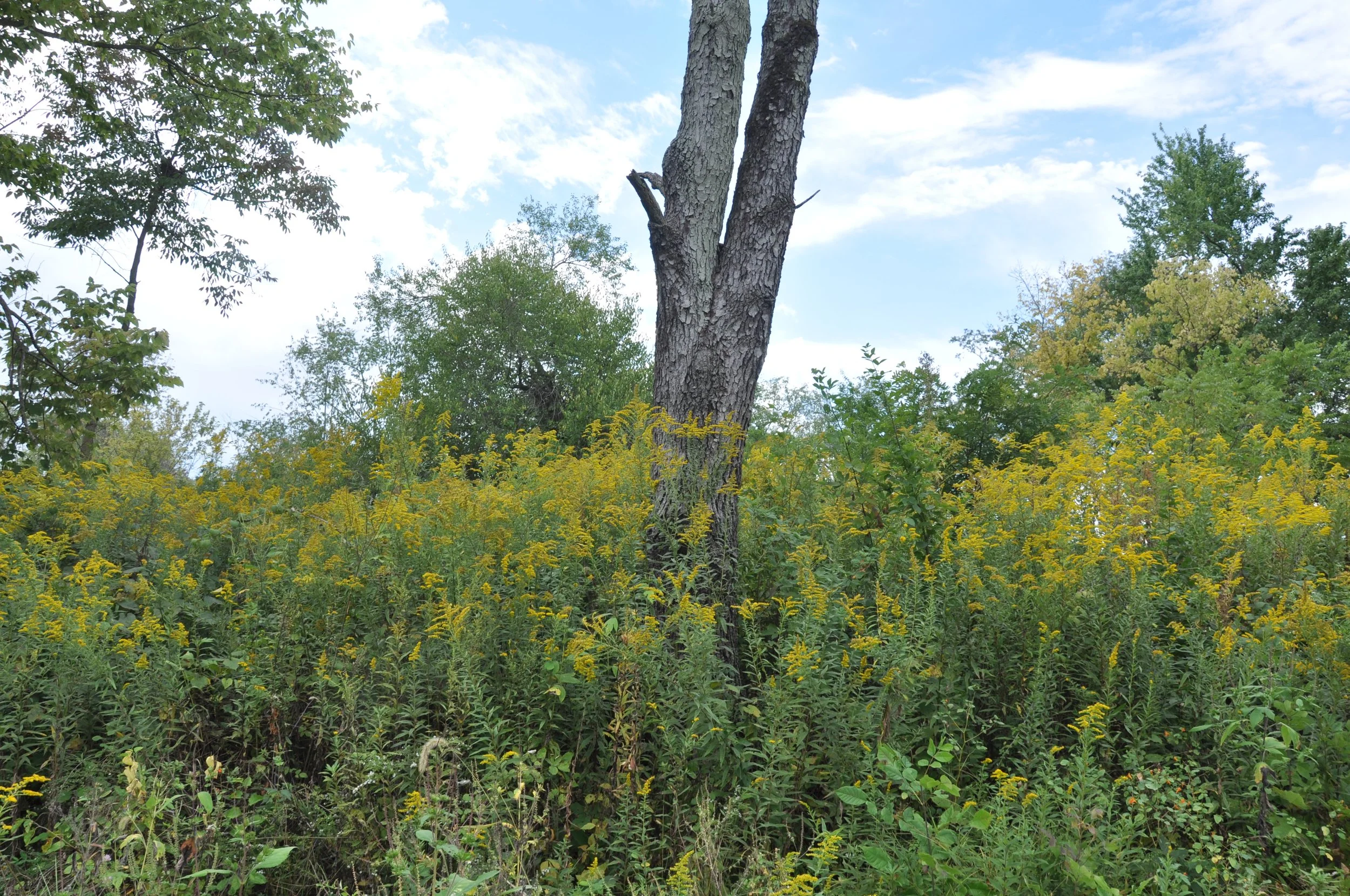Fall Equinox: Looking at Goldenrod
A glowing wall of goldenrod at Agraria, the day before the Fall Equinox. Photo by Audrey Hackett.
By Audrey Hackett
What catches your eye this time of year?
“I like anything yellow,” Kat Christen said, with a gesture that encompassed it all: yellow sunlight, yellow leaves, yellow flowers.
Kat was the first person I met on my inaugural ramble around Agraria on Wednesday, the day before the Fall Equinox. It was summer by the thermometer, but autumn by every other measure. Milkweed pods were spilling their soft first snow. New England asters stood densely purple. Falling leaves caught a curl of breeze—or wait, was that a tango of sulfur butterflies?
And goldenrod.
As I walked Cherry Lane, goldenrod leaned from both sides of the path, bright plumes winking with bees. The dark trunks of the cherries appeared spaced like the posts of some enormous fence, planned and placed long ago. From the canopy came the converse of birds: wrens, nuthatches, robins, jays, crows.
I look forward all year to the Fall Equinox. I love summer, winter, spring. But fall, the breakdown season, is my favorite. I like to be reminded of endings. And of passages through the darkness to new beginnings.
This Equinox brings a personal new beginning: working for Agraria, an organization I’ve admired from afar (or really, a mile down the road) for several years. I’m a poet, writer-of-all-trades, and former newspaper reporter. I’m a raiser of monarch butterflies, a lover of plants, a person who steadily over decades has opened her heart to the natural world. And in opening my heart, I’ve experienced the reciprocal return: a sense of belonging to a more-than-human community, the most durable and defining sense of belonging I’ve ever known.
This moment of the year, belonging means embracing and being embraced by goldenrod, genus Solidago, member of Asteraceae, the sunflower family. At the Equinox, as nature is holding an estate sale, laying everything out in the confidence it will all be carted away, goldenrod is the shiniest offering. But it’s not the family’s jewels. It’s the common item. It’s glorious and free.
As I followed the mowed paths and neared the children’s play area, a young voice floated over the glowing walls of goldenrod.
“Hey, look at all this goldenrod.”
I was. I really was. And the goldenrod was looking at me.
*Audrey Hackett recently joined Agraria as associate editor of the Agraria Journal.

